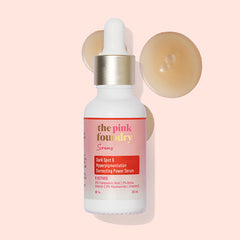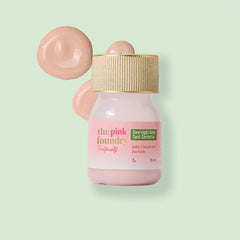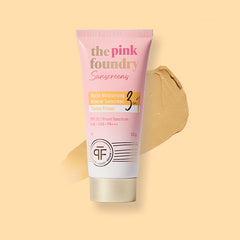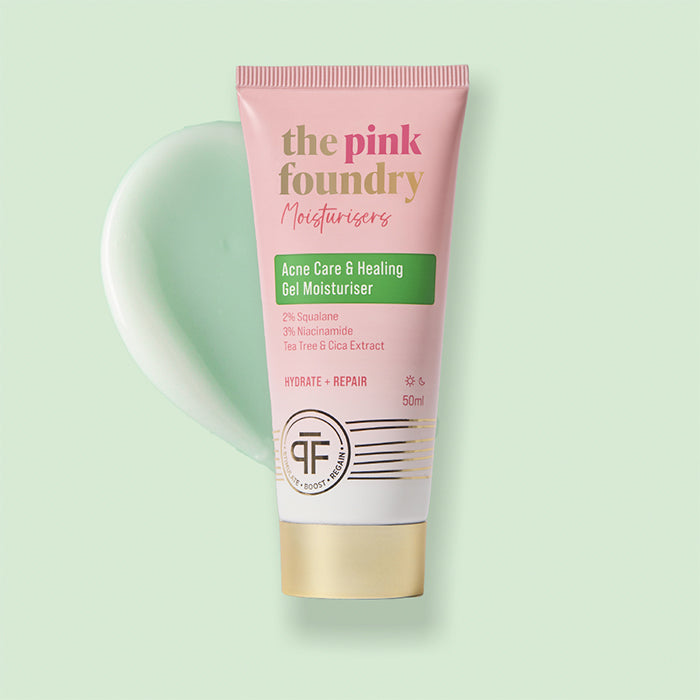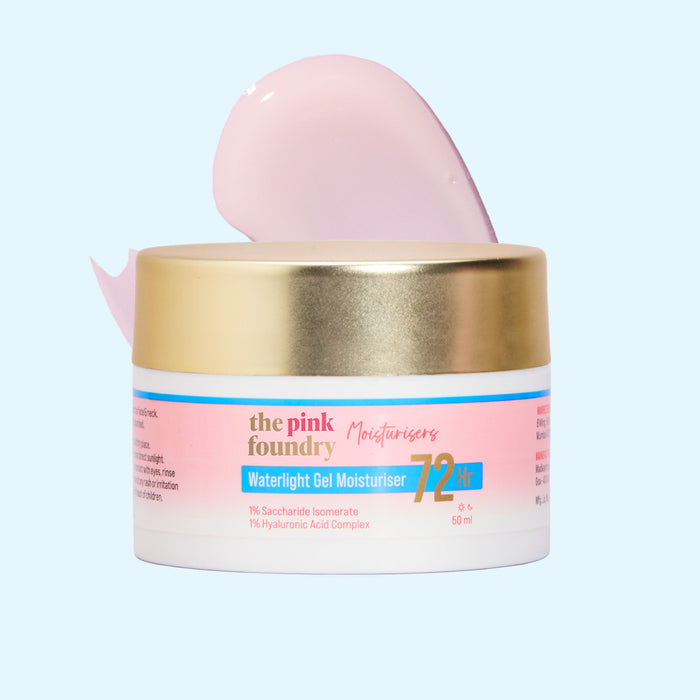A dermat-recommended guide on how much moisturiser to use on your face
Introduction
You’ve probably been applying your favourite face creams for years. But are you certain you know how to apply it correctly? Experts believe that one who knows how much moisturiser to use on the face can make the most out of this important stage in their skincare regimen.
Keep reading for all the information, which covers everything from how often to use moisturiser to where to place it in your routine to expert advice on how to use them in practice.
Pat, massage, or dab? The best way to apply moisturiser
Should we pat, massage, or dab? The patting method works well for absorbing serums, creams, lotions, and gels. Thus, that will probably comprise the bulk of the items in your skincare routine, such as eye creams, moisturisers, and serums.
Since it doesn’t pull on the skin, this method is more gentle on sensitive skin. The benefits include improved blood circulation and even distribution. This method is crucial around the delicate eye area and is even more vital for eye lotions.
Apply cosmetics to the face gently, working outward from the inner regions. Since rubbing creates friction, stretches the skin, and degrades collagen and elastin, it may be more harmful than beneficial for your skin. To create the foaming action, avoid rubbing when using cleansers.
How much moisturiser should you use on your face?
So now that you know how to use them in practice, let’s learn how much amount of moisturiser to use on the face. You can apply moisturiser after slathering in your other skincare products. Make sure to cover every area, including your ears, hairline, and neck, with an amount around a quarter size.
With advanced skincare technologies, moisturisers like The Pink Foundry’s Acne Care & Healing Gel Moisturiser with Tea Tree & Cica can now be completely hydrated and absorbed without leaving a greasy or sticky afterglow. Aim for one almond’s length and volume in your nighttime and morning moisturisers.
Apply lotion by dotting it over your face and neck and blending it to ensure even coverage. Don’t apply extra if the skin’s surface still feels dry after using the recommended amount. To eliminate dead skin cells impeding the effective penetration of your products, exfoliate your skin more thoroughly. As your skin is most likely dried, use a hyaluronic acid serum underneath your heavier cream.
How many times should you reapply moisturiser
For those often wondering ‘how many times should I apply moisturiser,’ do it at least twice a day. Do it after cleansing your face, and moisturise every time you’ve showered or cleaned yourself (such as after working out or going swimming).
Experts advise reapplying moisturiser during the day if your skin feels extremely dry. Use a moisturising mist or a lighter product like The Pink Foundry’s Waterlight Gel Moisturiser 72 Hour Hydration so as not to interfere with your makeup. Also, midday moisturising may be essential for those with inflammatory skin diseases like psoriasis or eczema.
Moisturiser tips for dry skin
The following moisturising advice can help you maintain hydrated, healthy-looking skin all day long:
1. While your skin is still damp after showering or bathing, apply moisturizer immediately to help seal moisture and ward off dryness.
2. You can improve the moisture content of the air in your house by using a humidifier. This is crucial in the winter when the air is dry.
3. Acquire enough water throughout the day to maintain internal skin hydration.
4. Avoid hot baths and showers because they deplete the skin’s natural oils and cause dryness.
5. Use frequent exfoliation to get rid of dead skin cells and provide room for moisturizer to absorb better.
6. Creating a thorough skincare regimen is crucial, besides applying a moisturizing product. This must cover exfoliation, moisturizing, and other treatments targeting certain skin issues.
Also Read: How to Choose the Right Moisturiser for Dry Skin
Moisturiser tips for oily skin
- Water-based moisturisers are far less rich than oil-based ones, so if your skin is oily, you should opt for one.
- Instead of interfering with your skin’s natural processes, help them along. Try a natural alternative that works harmoniously with your skin instead of chemical and synthetic items that can dry out, irritate, and disturb your skin’s natural state.
- Your best bet is a gentle moisturising formula. Very thick products will be too rich for your skin type. Your pores won’t absorb a thick cream; instead, it will sit on the skin top.
Also Read: The Best Face Moisturizer for Oily Skin: A Comprehensive Guide
Conclusion
Applying a thin, even coating of moisturiser to your whole face is the aim of any moisturiser. Avoid applying it so thickly that it forms a film on your skin. Overusing moisturiser wastes your product because it won’t be absorbed. Use a quantity of cream equal to a nickel while applying it.
Creams require a little more because they spread more easily than lighter lotions due to their thicker nature. Furthermore, they are usually used for dryer skin types and may require a bit more moisturising. For your neck, use an extra nickel-sized dollop.
FAQs
1. How often should I moisturise my face?
Generally speaking, dermatologists advise moisturising your face twice a day. It’s best to incorporate moisturising into your daily regimen. Face moisturisers, like your daily cleanser, must be used consistently to get the advantages and give you soft, vibrant-looking skin.
2. What amount of moisturiser is appropriate for my face?
Applying facial moisturisers correctly according to the directions on the packaging is always advised. These products are meant to be used over the full face (including the neck). The “correct” amount of facial moisturiser can change based on the product's texture and the type of skin you have.
3. Why is it vital to use an SPF-containing skin moisturiser?
A facial moisturiser with sunscreen is important to your skincare routine.” “It hydrates, moisturises, and helps shield your skin from UV rays. No matter the season or kind of skin, use a face moisturising product that contains sunscreen and reapply it at least every two hours.
4. When is the optimal moment to apply a moisturiser?
Most experts advise applying a moisturiser as soon as the skin is damp. This means the earlier you apply your serum, the sooner your moisturiser can lock in much-needed hydration.
